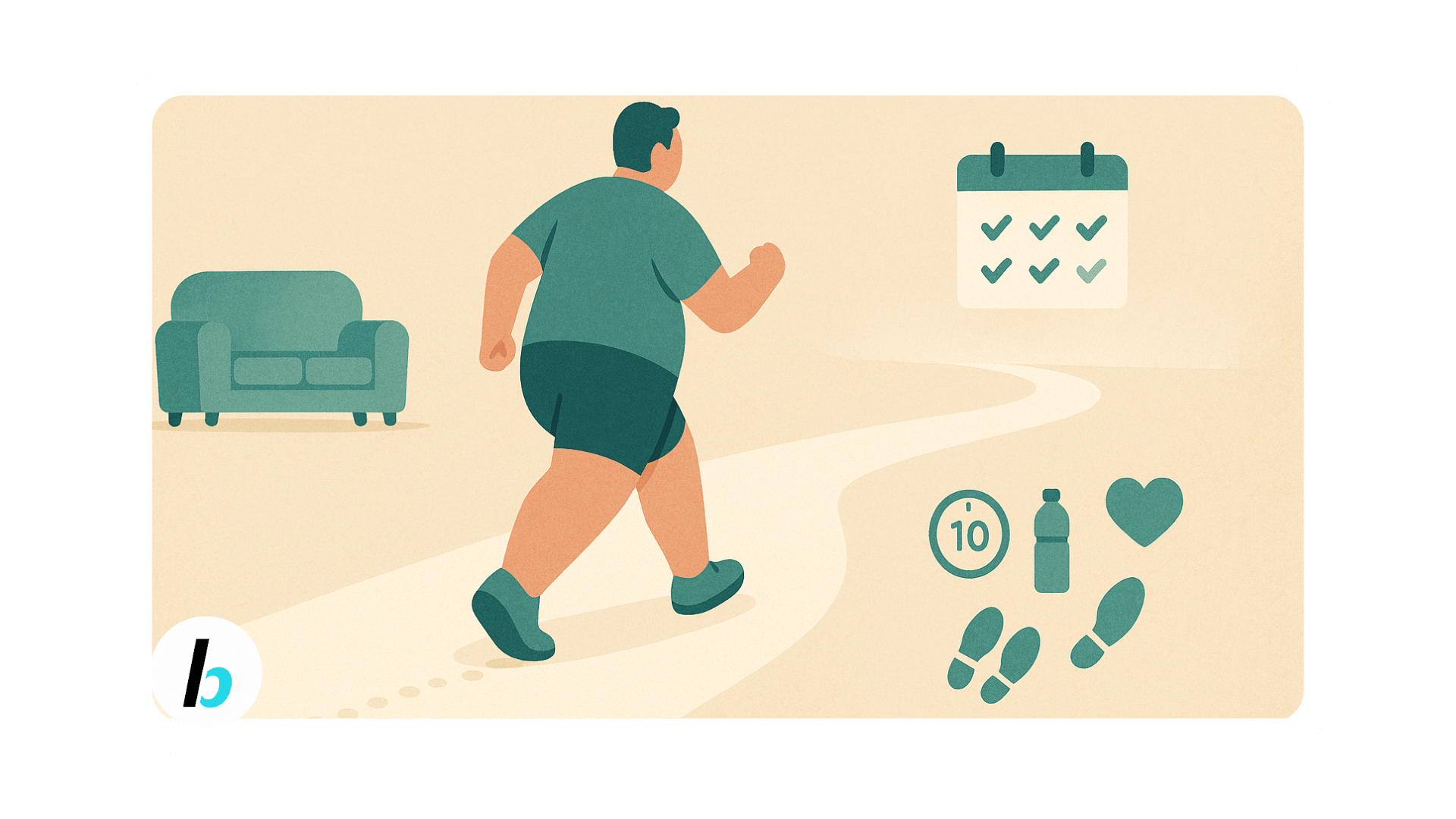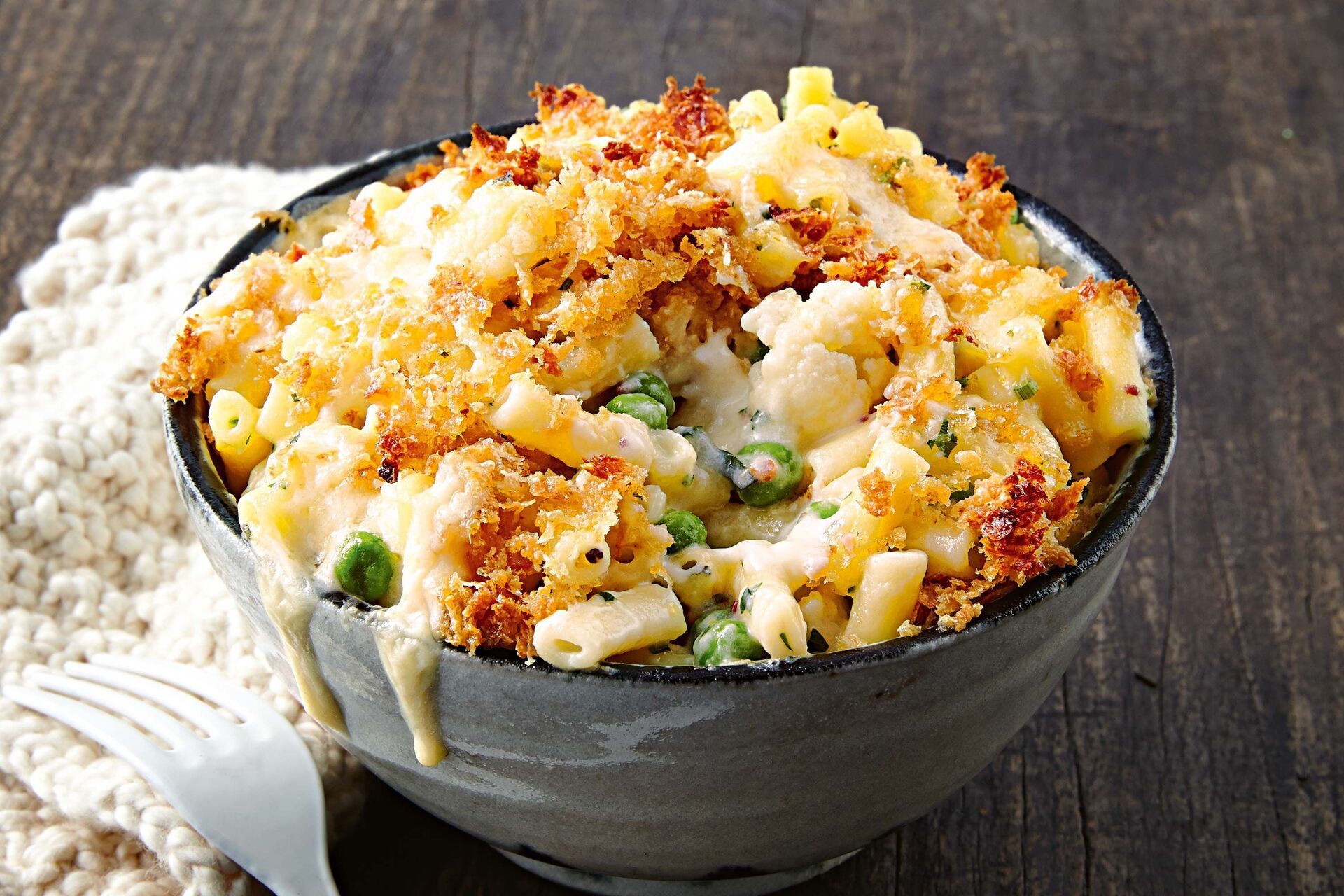Hey fitness nerds!
Thank you all {{active_subscriber_count}} of you!
Starting a fitness journey when you're completely out of shape can feel overwhelming, but with the right approach, anyone can transform their health and build a stronger body, regardless of their starting point.
Read 🔽 below!
🍃
IN LESS THAN 10 MINUTES WE WILL COVER:
Weekly Insights:
Getting Fit When You're Completely Out of Shape (Part 1)
Article Explained Simple: Why BMI Health Metric Can Mislead
Top 3 Unconventional Stress Relief Techniques
Best Healthy Mac n Cheese Recipe
Getting Fit When You're Completely Out of Shape (Part 1)

The hardest part of any fitness journey isn't the exercises themselves, it's taking that first step. When you're completely out of shape, the fitness world can seem intimidating and unwelcoming. The good news is that you don't need to be fit to start getting fit, and small, consistent actions will yield remarkable results over time.
Before diving into specific workouts, it's crucial to understand that your current fitness level is your perfect starting point. Too many beginners compare themselves to others or try to match workouts designed for more advanced exercisers. This approach almost always leads to discouragement, injury, or burnout.
Instead, celebrate where you are now and focus on gradual improvement. Research shows that deconditioned individuals often see the most dramatic percentage improvements in fitness metrics. Your body is primed to respond positively to even the gentlest introduction to regular movement.
The foundation of any successful fitness journey is consistency, not intensity. It's far better to do 10 minutes of gentle exercise daily than an exhausting hour-long workout once a week. Your primary goal in these early weeks should be establishing the habit of regular movement, not pushing your physical limits.
Many beginners make the mistake of doing too much too soon. While enthusiasm is valuable, your body needs time to adapt to new stresses. Start with just 10-15 minutes of activity daily, focusing on movement that feels good rather than challenging. As your body adapts, you can gradually increase duration and intensity.
Walking is the perfect foundational exercise for beginners. It requires no special equipment, can be done anywhere, and offers significant health benefits with minimal injury risk. Start with short, comfortable walks and gradually increase your time or distance as your fitness improves.
For those with joint issues or significant weight concerns, water-based exercises provide an excellent low-impact option. The buoyancy of water reduces stress on joints while still providing resistance for strength development. Many community pools offer beginner-friendly water aerobics classes.
Gentle stretching and basic mobility work are also valuable components of a beginner's routine. These activities improve range of motion and prepare your body for more challenging exercises later. Focus on major muscle groups like hamstrings, quadriceps, shoulders, and lower back.
As your comfort with movement increases, simple bodyweight exercises can be introduced. Modified versions of classics like wall push-ups, assisted squats, and supported lunges build functional strength while allowing you to control the difficulty level. Remember that proper form is far more important than repetitions or resistance at this stage.
Tracking your progress is essential, but traditional metrics like weight or appearance change slowly. Instead, focus on process-based measurements like minutes of activity, number of steps, or how you feel during and after exercise. These indicators provide more immediate positive feedback.
Perhaps most importantly, be patient and kind to yourself. Research shows that self-compassion is more effective for long-term behavior change than harsh self-criticism. Celebrate small victories, and understand that occasional setbacks are a normal part of any journey, not a reason to give up.
In Part 2, we'll explore how to structure a progressive workout plan that builds on these foundations, introduce more challenging exercises as your fitness improves, and discuss nutrition strategies that complement your new activity levels.
But for now, remember that simply starting, wherever you are, is the most important step of all.
Over 1 million people registered for this event
WARNING: Not a health and fitness topic!
But Alex is the No. 1 person I watch for the Business topic. And this might not apply to the majority of you, but for people who do have a business or want to have one, listen.
I’ve read all his books and watch his videos religiously; he is great.
He is hosting a FREE event in 2 weeks. (he did one 2 years ago, and it was incredible).
The biggest entrepreneur event of the year is happening August 16th 9am PT / 12pm ET.
Alex Hormozi is releasing $100M Money Models (book) LIVE. Plus giving away his secret project to everyone who attends.
Don't miss out. Free to join.

Fitness and health enthusiasts - We have a lot of things in store for you!
Check out busybody.io - and join the waitlist for our brand-new AI health app.
Article of the Week
Article Explained Simple: Why BMI Health Metric Can Mislead
The study found that BMI, which only considers weight relative to height, fails to distinguish between muscle mass and fat mass, potentially categorising muscular, healthy individuals as "overweight" or even "obese.
This misclassification is particularly common in athletes, bodybuilders, and people with naturally muscular builds, with the research showing that up to 54% of individuals classified as "overweight" by BMI standards actually had healthy body fat percentages.
Conversely, the study identified a concerning phenomenon called "normal weight obesity" where individuals have a normal BMI but unhealthy high body fat percentages, putting them at increased health risk despite their "normal" classification. = AKA Skinny Fat
BMI also ignores where fat is distributed on the body, which is crucial because visceral fat (around organs) poses significantly higher health risks than subcutaneous fat (under the skin), meaning two people with identical BMIs can have dramatically different health profiles.
More comprehensive health assessments should include measurements like waist circumference, waist-to-hip ratio, body fat percentage, blood pressure, blood glucose, and cholesterol levels, which together provide a much more accurate picture of metabolic health than BMI alone.
Despite these limitations, the researchers acknowledge that BMI remains useful as a simple population-level screening tool and starting point for discussion, but should never be the sole determinant of an individual's health status or treatment recommendations.
Fascinating Fact:
The creator of BMI, Belgian mathematician Adolphe Quetelet, never intended it to be used as a measure of individual health or body composition. He developed it in the 1830s as a statistical tool to study populations and identify the "average man." Quetelet himself explicitly warned against applying this index to individuals, yet today it remains one of the most widely used metrics in healthcare systems worldwide.
We have also started a referral program where you can earn prizes for referring your friends to this newsletter.
What other topics do you want me to write about?
Top 3 Unconventional Stress Relief Techniques
These surprising approaches can provide effective stress relief when traditional methods aren't working:

Nature immersion therapy
This involves deliberately disconnecting from technology and immersing yourself in natural environments for at least 20 minutes.
Research shows that time in nature reduces cortisol levels by up to 16% and significantly lowers blood pressure, with effects beginning in as little as 10 minutes.
The technique works best when you fully engage your senses, noticing the sounds of birds or rustling leaves, feeling the texture of bark or stones, and observing the patterns and colours in your surroundings.
For those unable to access outdoor natural settings, studies show that even viewing nature photographs or having indoor plants can provide smaller but measurable stress-reduction benefits.
Expressive writing
This technique involves writing continuously about your deepest thoughts and feelings for 15-20 minutes without worrying about grammar, spelling, or structure.
Studies show that this form of writing reduces cortisol levels and improves immune function, with participants experiencing reduced stress symptoms for up to six weeks after just three writing sessions.
The key is absolute honesty, write what you truly feel without self-censorship, then destroy or delete what you've written if it helps you express yourself more freely.
This practice works by helping process difficult emotions that might otherwise remain bottled up, and the act of translating feelings into words engages different brain regions than rumination alone.
Progressive muscle relaxation
This systematic technique involves tensing specific muscle groups for 5-10 seconds, then relaxing them completely for 30 seconds, working through the entire body.
Research shows this practice can reduce perceived stress by up to 30% and significantly improve sleep quality when practised regularly before bedtime.
The technique works by helping you recognise subtle tension you may be carrying unconsciously and teaching your body the difference between tension and complete relaxation.
For best results, create a quiet environment, lie down comfortably, and work systematically from your feet to your head, focusing on the sensation of warmth and heaviness as each muscle group relaxes.
Best Healthy Mac n Cheese Recipe (makes 4 servings)
This lightened-up version delivers all the creamy comfort of traditional mac and cheese with significantly better nutrition.
This recipe was created in 2 minutes with the BusyBody App. Click the button for free access to the app.

Macros per serving
Total Calories: 310 kcal
Protein: 25 g
Carbohydrates: 35 g
Sugars: 4 g
Fat: 10 g
The Ingredients
8 oz (225g) high-protein pasta (chickpea, lentil, or whole wheat)
1 medium head cauliflower, cut into florets (about 4 cups)
1 tablespoon olive oil
1 small onion, diced
2 cloves garlic, minced
2 tablespoons flour (whole wheat or chickpea flour works well)
2 cups unsweetened almond milk or low-fat milk
2 cups reduced-fat shredded cheese (mix of cheddar and mozzarella)
1/4 cup nutritional yeast
1 teaspoon mustard powder
1/2 teaspoon paprika
1/4 teaspoon turmeric (for colour)
Salt and pepper to taste
Optional topping: 2 tablespoons whole wheat breadcrumbs mixed with 1 tablespoon grated Parmesan
Instructions
Preheat your oven to 375°F (190°C) and lightly spray a 9x13 baking dish with cooking spray.
Cook the pasta according to package directions, but reduce the cooking time by 2 minutes to keep it al dente. Drain and set aside.
While the pasta is cooking, steam the cauliflower florets until fork-tender, about 5-7 minutes. Transfer half the cauliflower to a blender and set the other half aside.
In a large saucepan, heat the olive oil over medium heat. Add the diced onion and cook until translucent, about 3-4 minutes.
Add the garlic and cook for another 30 seconds until fragrant.
Sprinkle the flour over the onion and garlic, stirring constantly for 1-2 minutes to create a roux.
Gradually whisk in the milk, stirring continuously to prevent lumps from forming. Continue to cook, stirring frequently, until the mixture begins to thicken, about 3-5 minutes.
Add the steamed cauliflower from the blender, nutritional yeast, mustard powder, paprika, and turmeric to the milk mixture. Use an immersion blender to blend until smooth, or transfer to a blender and then return to the pot.
Reduce heat to low and add 1 1/2 cups of the shredded cheese, stirring until melted and smooth. Season with salt and pepper to taste.
Combine the cheese sauce with the cooked pasta and remaining cauliflower florets, gently folding everything together.
Transfer the mixture to the prepared baking dish. Top with the remaining 1/2 cup of shredded cheese and the breadcrumb mixture if using.
Bake for 20-25 minutes until bubbly and lightly golden on top.
Let stand for 5 minutes before serving to allow the sauce to set.
Make your dream of working online a reality and start a newsletter - join beehiiv for free and don’t pay any renewal fees until you grow your subscriber base >2500 subscribers.
I’ve personally tried plenty of other platforms, and Beehiiv is hands down the best and easiest to use.

